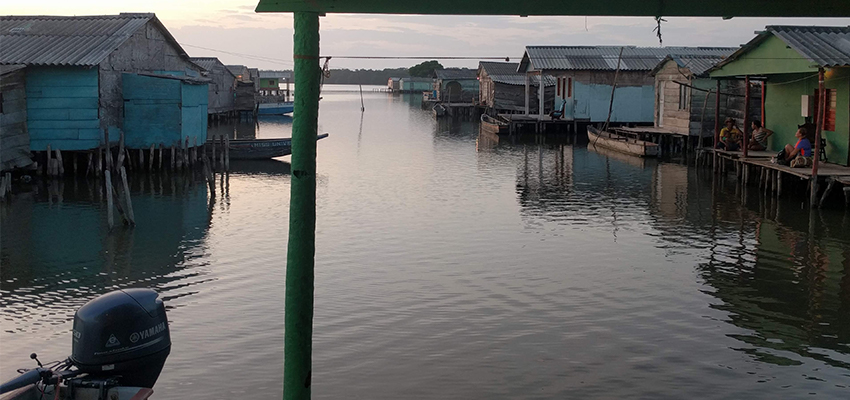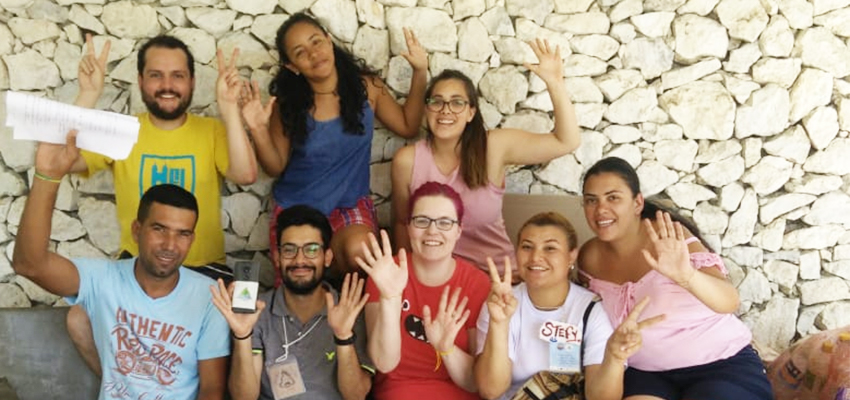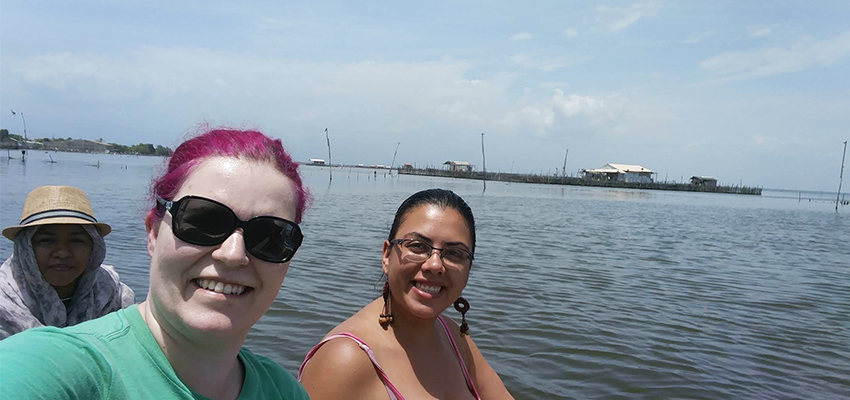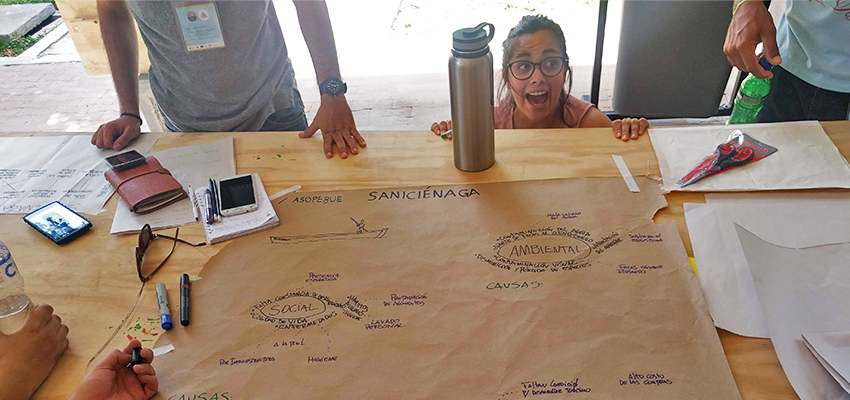
The first week of IDDS New Coastal Territories is completed, and we are enjoying a much-needed day of rest after some intense heat! After participants arrived on Sunday and Monday, we kicked off with an opening ceremony to which members of the university and surrounding communities were invited. After that, it was time to present the five projects and form teams.
Team SaniCiénaga
As I mentioned in my previous blog post, my team would be focused on the theme of sanitation, and my co-facilitator Carlos “Yoshi” Walteros (IDIN member from Cali, Colombia) and I received a group of six participants from Colombia, Mexico, and Chile who were fired up to expand access to improved sanitation!
We set to work understanding the background of our project in a palafito (stilt) community situated over the water in Ciénaga Grande, an estuary near Santa Marta, where people have lived far from the mainland and fished among the mangroves for over 200 years. Happily, palafito resident Nabil Renterías was able to attend the summit and join our team, lending his experience to the co-creation of a viable prototype for an improved palafito toilet! The participants decided to name the team SaniCiénaga, to represent our work in this unique ecosystem.

Community visit to Buena Vista
Community visits are one of the most exciting and important parts of an IDDS. Whenever possible, participants and organizers stay in the community overnight to experience the daily lives of the users with whom they are designing. As Brazilian participant Gaston Santi Kremer put it, “The field visit [is] an important way to facilitate and experience the feeling of empathy for the stakeholders involved.” At IDDS New Coastal Territories, we are visiting the community twice: once to gather information, and a second time to present our ideas to the stakeholders.
My team’s first journey to the palafito community of Buenavista was one of the most unusual I’ve ever taken. After a bus ride to the town of Tasajeras, which is on a causeway in the ciénaga, two of our hosts met us with their motorboat, which we used to travel over an hour through the ciénaga and the mangroves to reach the palafito. There were beautiful birds, small jumping fish (some of which had to be saved when they leaped into our boat), and an unforgiving sun overhead.

When we arrived, we were greeted by our hosts, the extended de la Cruz family, who live in a group of houses on the edge of the palafito. Dogs were swimming through the water between houses, and cats mewed from the patios at the edge of the water. Some homes had patches of artificial land with vegetable gardens or spaces to repair canoes. There were shops, pool halls, churches, a soccer field, and an isolated building to store inorganic waste, all on stilts or little artificial islands.
First-hand experience of sanitation and bathing facilities & problem framing
After visiting many areas of Buenavista and discussing the fishing business, we experienced the sanitation and bathing facilities at the homes of our host families before going to sleep. Most homes had bathrooms consisting of a hole cut into the wooden floor. This is also where people shower. Due to the difficulty of bringing resources to this community, stories abound of people falling into the water when the rotted floors of the bathrooms cave in.
Since returning from Buenavista, we have spent our time on one of my favorite activities: problem framing. After taking in the experience of community life, we need to synthesize that information and understand where we might start to make a difference in the short time we have together. By organizing and discussing our findings, we can understand the root causes of today’s sanitation outlook, then identify opportunities to reduce illness and contamination in Buenavista together with its residents over the next week. I’m excited to keep guiding this team!

About the author - Libby Hsu
Libby graduated from Rensselaer Polytechnic Institute and received master's degrees in structural engineering and building technology from MIT. She became involved with D-Lab by taking the D-Lab: Schools class and traveling to Cambodia to work on alternative concretes. Now she co-teaches D-Lab: Energy, D-Lab: Development, and the cross-listed Terrascope class Design for Complex Environmental Issues; coordinates D-Lab's student work in El Salvador; trains D-Lab trip leaders who are taking students to the field; and supports instructors and students in the D-Lab ecosystem. Additionally, Libby is an MIT freshman adviser and was part of MIT's Mind+Hand+Heart Initiative from 2015-2017, as part of the Increase Help Seeking working group. She speaks German and Spanish, works as a freelance technical editor, practices with the MIT Shotokan karate club, knits, and talks about sanitation rights and toilet designs with anyone who will humor her.

